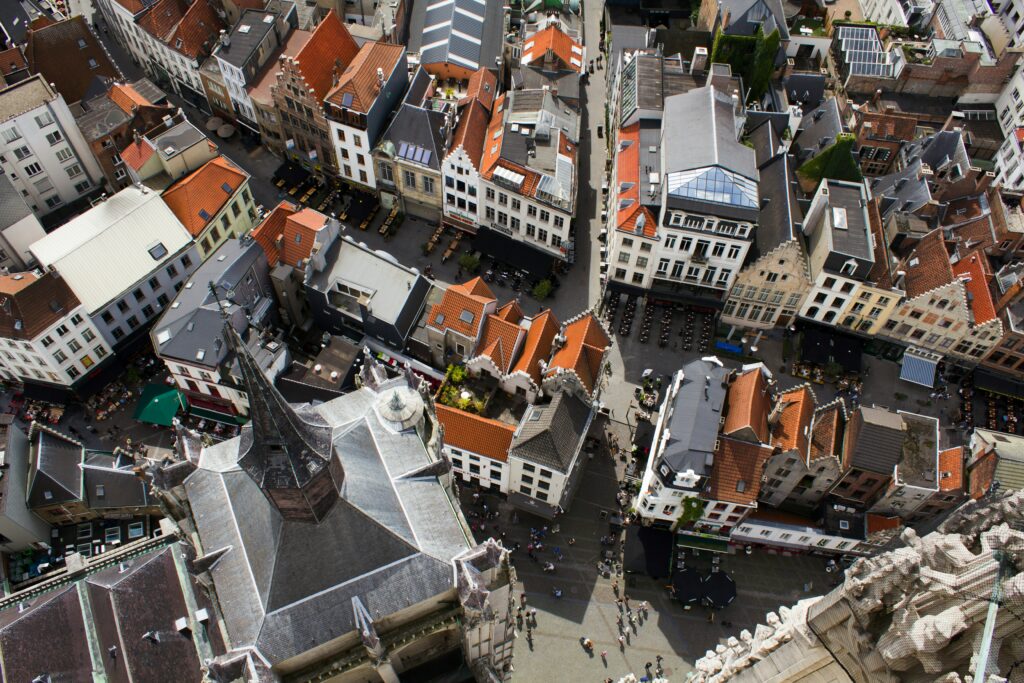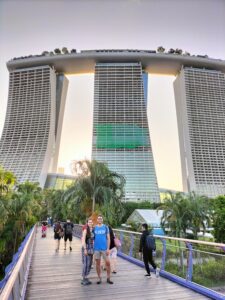Table of Contents
| You have never been to Antwerp if… FOOD – you didn’t drink a Bolleke beer! ACTIVITIES – you have not eaten among the saints of the Elfde Gebod! SOUVENIRS – you didn’t buy the Antwerp Handjes (Antwerp Hands) as a gift! |
Introduction
Antwerp, located in the Flemish region of Belgium, is a vibrant and cosmopolitan port city, rich in history, art and culture. We’re so excited for you to visit this lovely city!
In this article, we’ll help you plan the perfect trip. Here, you’ll discover what to see in Antwerp in 2 days. Plus, we’ll also suggest some amazing day trips you can do from Antwerp.
Claudia and I were here in August 2021 and, weather aside (always bring an umbrella and rain cape with you even in the height of summer!), you can spend a few wonderful days drinking excellent local beer, tasting the soft Belgian waffles and admiring the architectural Flemish wonders.
We’d love to hear from you if you’ve already been to Antwerp and tell us what you liked most in the comments below!
Here’s our best guide about what to see in Antwerp in 2 days!
How to get to Antwerp
Antwerp is one of the most important cities in Belgium and there are lots of ways to get there! Whether you’re travelling from within the country, from other European cities or from abroad, there’s a great transport option for you.
We’re sorry to say that Antwerp airport is poorly served by the main European destinations, so our advice is to land at Brussels International Airport, just 44 km away. From there, you can reach the Flemish city by train (30-40 minute journey), by bus (slower) or taxi (much more expensive).
If you’re not keen on flying, don’t worry! Antwerp is well connected by train to the main Belgian cities (Ghent, Bruges) and European capitals (Paris, Amsterdam, London, Cologne).
If you’re looking to rent a car, then look no further than DiscoverCars.com! You’ll find here the perfect rental solution.
How to get around in the city
Once you arrive in Antwerp, the city offers several means of transport to make getting around easy. Firstly, the historic centre of the city is compact and ideal for exploring on foot, so you won’t need to rely on any form of transport during your stay.
For longer journeys, however, you can rely on the De Lijn public transport network, which covers the entire city and surrounding areas.
Antwerp is also a bicycle-friendly city, with many cycle paths and bike-sharing services such as Velo Antwerpen. We strongly advise you to choose this service if you do not want to travel on foot, as the Velo Antwerpen bike-sharing service is really widespread (306 stations and 4200 bicycles) and very cheap (€5 for 24-hour access to the service with a maximum of 30-minute rides). Click here for all the details of the service!
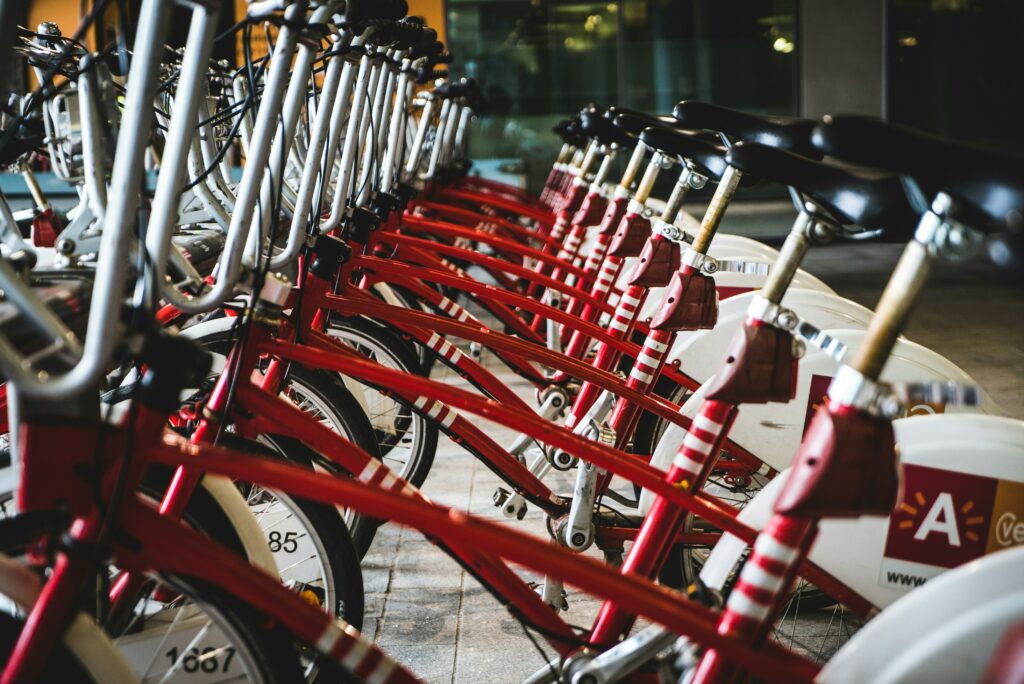
What to see in Antwerp in 2 days
Click the GetYourGuide banner below to discover guided activities in Antwerp.
Here is a list of the main attractions you can visit by yourself in 2 days.
Day 1 – Central Station, Historic City Centre and Het Zuid
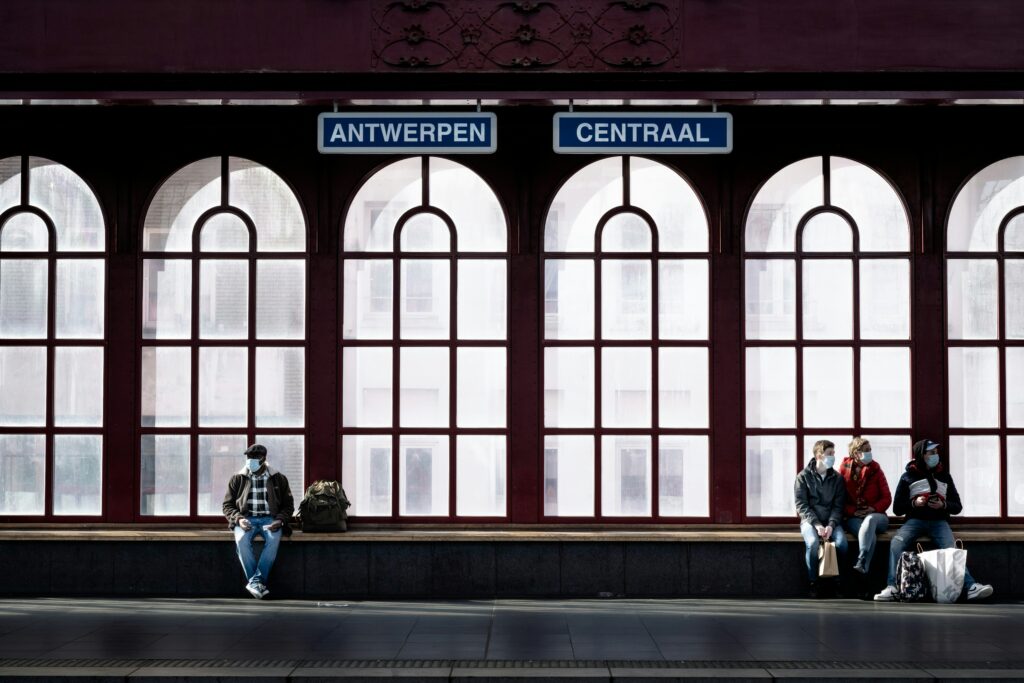
On the first day, as you will most likely arrive by train, we recommend that you immediately take a look at the Central Station, both inside and out. Antwerp-Centraal Station is indeed one of the most beautiful and iconic railway stations in the world. Built between 1895 and 1905, it is a masterpiece of architecture and engineering and was named the most beautiful train station in the world by Mashable magazine in 2014. What makes it unique is that it is divided into four levels, with a total of 14 tracks.
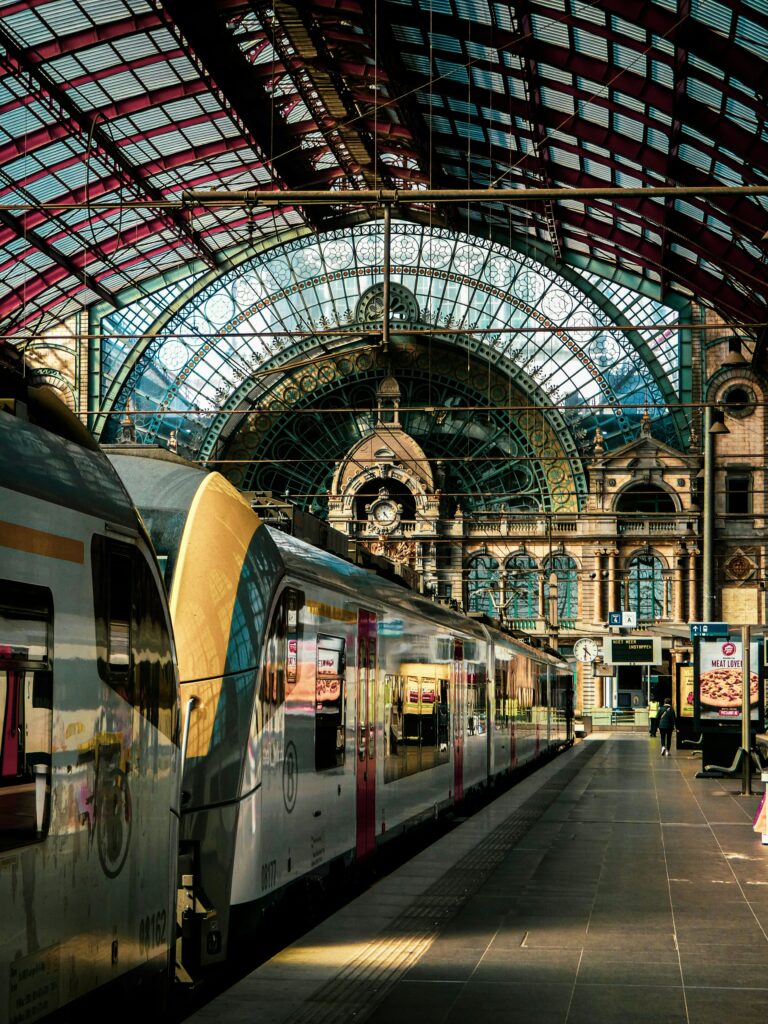
Once you leave the station, head towards the historic centre (a 22-minute walk), passing through the small China Town and, above all, Meir, the city’s main shopping street, where you will find international chain stores, department stores and historic buildings.
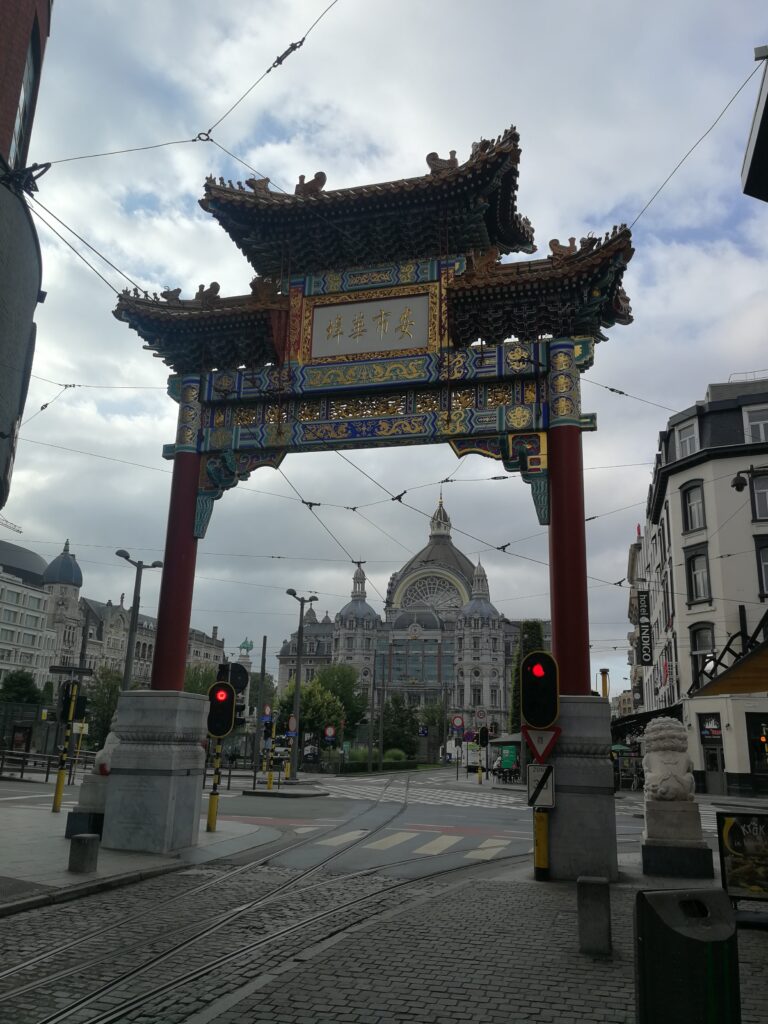
The rest of the first day can be spent visiting the historic centre of Antwerp and its surroundings, where most of the attractions are concentrated.
The Grote Markt is the main square in Antwerp’s old town, surrounded by historic buildings with ornate facades and gilded spires. In the centre of the square is the Brabo fountain, which depicts the legend of the founding of the city. The Renaissance Town Hall, a UNESCO World Heritage Site, dominates the square with its decorated façade.
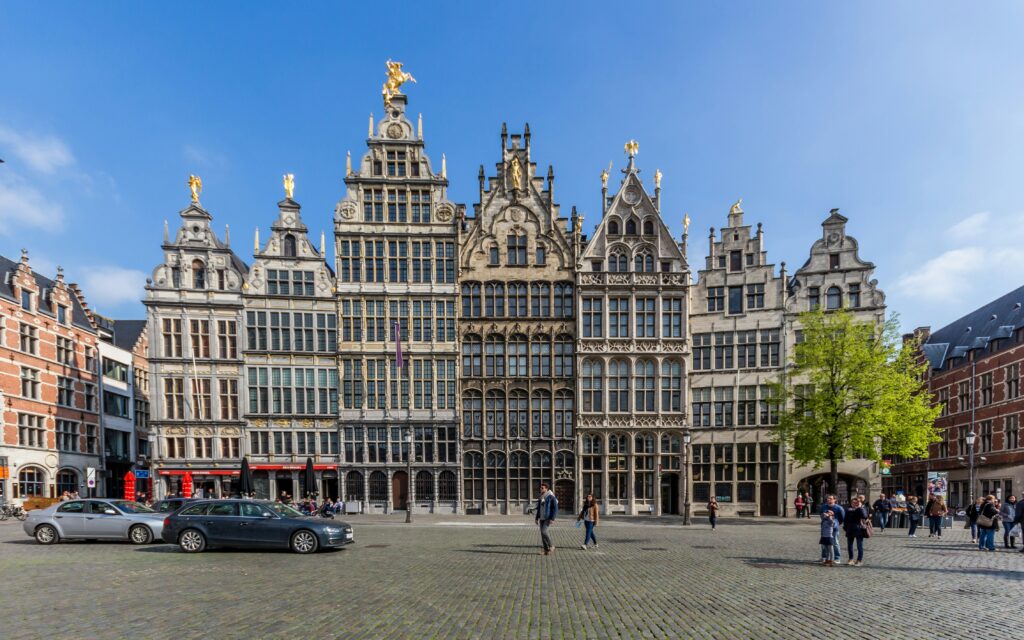
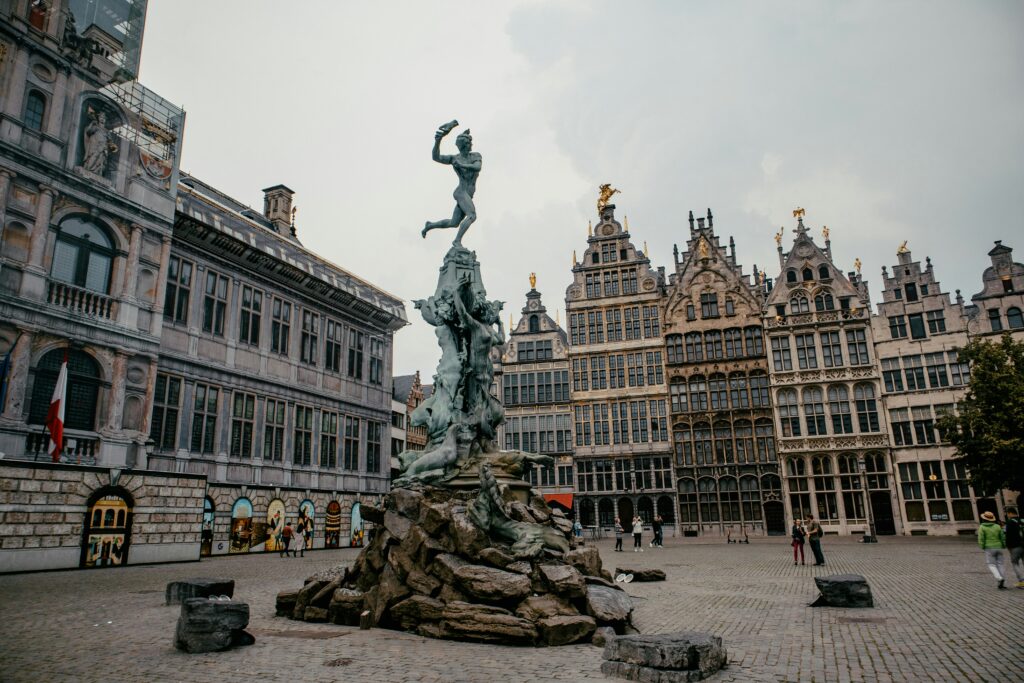
This is the ideal place to start your visit to the historic centre, relax in one of the many outdoor cafes and enjoy the lively atmosphere of the city.
Nearby is the Cathedral of Our Lady, one of Antwerp’s most iconic attractions. Begun in 1352 and completed in 1521, this majestic Gothic cathedral is home to masterpieces by Pieter Paul Rubens, including ‘The Raising of the Cross’ and ‘The Descent from the Cross’. Its soaring towers, stained glass windows and richly decorated interiors make it a must see for anyone visiting the historic centre.
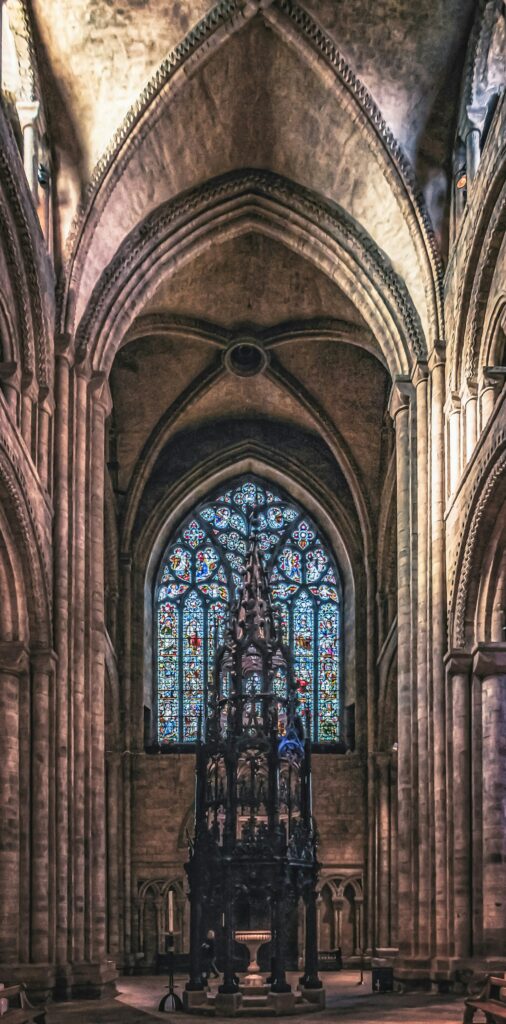
After visiting the church, head towards the Scheldt and you will immediately notice Het Steen, a 13th century castle. This medieval castle has been renovated and is now a museum dedicated to the city’s maritime history.
In addition, there are two unmissable museums in Antwerp, the Rubens House (Rubenshuis) and the Plantin-Moretus Museum.
The former is a magnificent Baroque residence that was the home and studio of the famous painter Pieter Paul Rubens. In addition to a large collection of works by Rubens and his contemporaries, the house museum offers a fascinating insight into the life and work of the Flemish master.
The second is a UNESCO World Heritage-listed museum dedicated to the history of printing and typography. Located in the original home and print shop of the famous printer Christophe Plantin and his son-in-law Jan Moretus, the museum houses antique printing presses, rare books and engravings.
Spend the evening of your first day in Antwerp in Het Zuid, a trendy and artistic neighbourhood known for its fancy restaurants, bars and art galleries. It’s a great place for a night out, with plenty of dining and nightlife options.
Day 2 – MAS, Antwerp’s Port House, St. Anna Tunnel
On the second day of your visit to the Flemish city, you can start with a nice walk to the Eilandje district (31 minutes walk from the Grote Markt). Eilandje, one of Antwerp’s most fascinating and rapidly changing districts, is located north of the historic centre and close to the city’s harbour.
The area is characterised by a mix of old warehouses, modern new buildings, internationally renowned museums and a lively cultural scene.
We recommend starting your visit at the Museum aan de Stroom (MAS), the district’s most recognisable landmark. Opened in 2011, this impressive modern building houses collections that explore Antwerp’s history as a port city, its international connections and urban life.
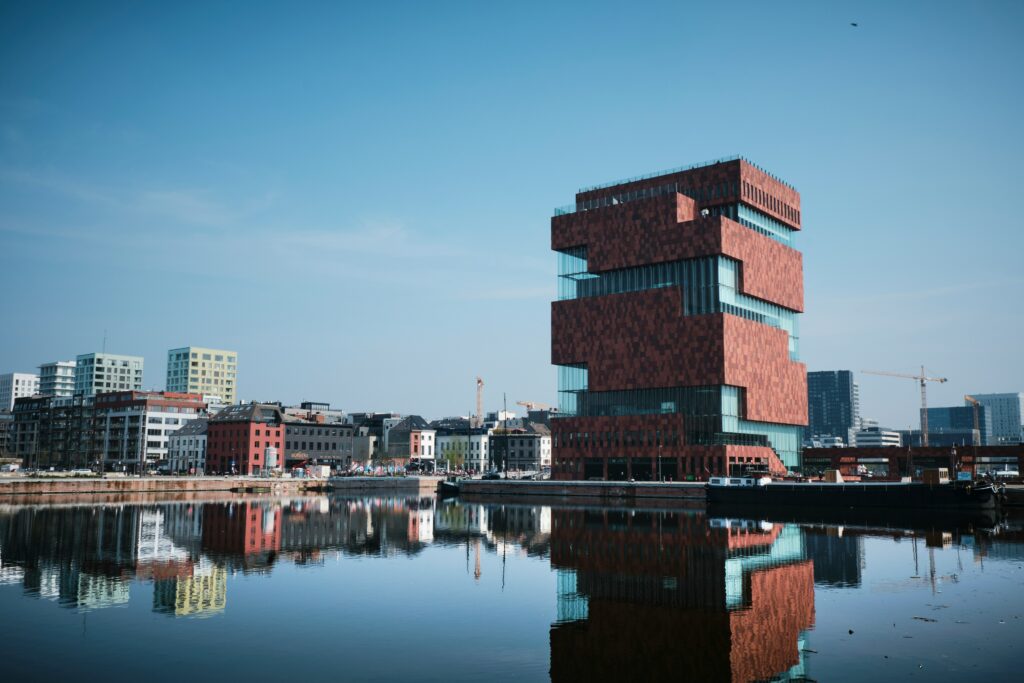
The roof terrace offers spectacular views of the city and harbour. Check here for tickets and rates!
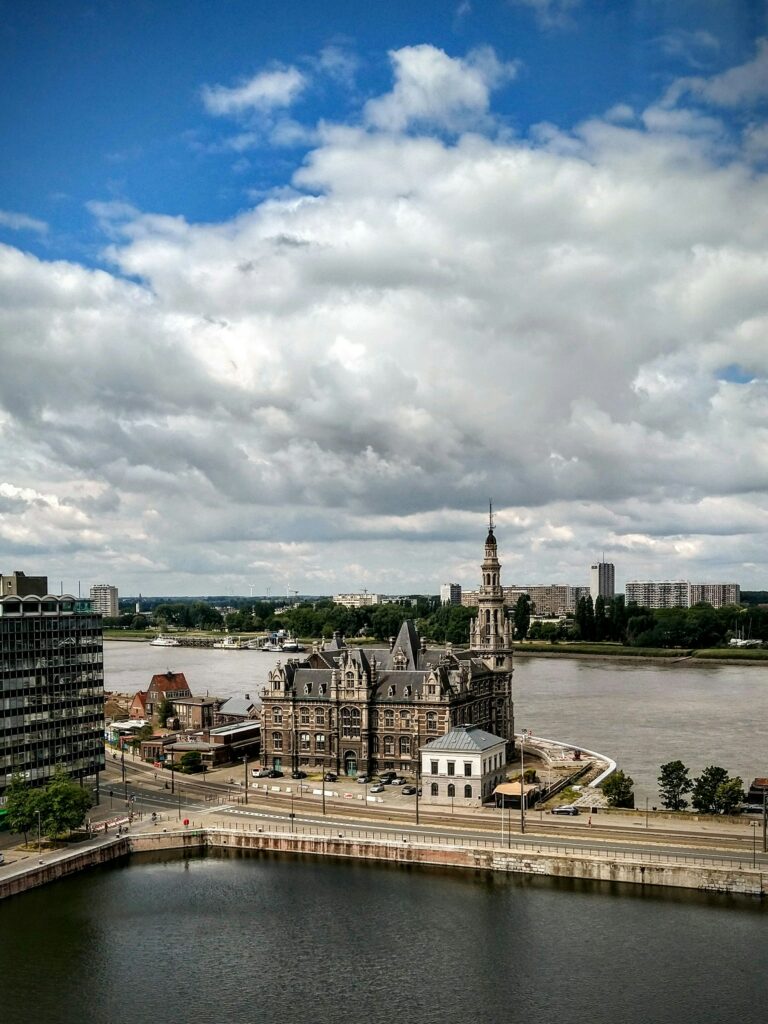
At the end of your visit, head to the Bonaparte Dock and the Kattendijk Dock, two historic docks that offer a pleasant walk along the water with numerous restaurants, bars and cafes to relax in. They are also the ideal place to admire moored boats and enjoy the maritime atmosphere.
From here, continue along the docks until you reach Antwerp’s Port House (Havenhuis). The Havenhuis is another example of modern architecture that has redefined the landscape of Eilandje. Designed by archistar Zaha Hadid, the building combines an old fire station with a futuristic glass structure that resembles the prow of a ship. As well as housing the offices of the Antwerp Port Authority, the Port House is an architectural marvel, especially at night when it is illuminated.
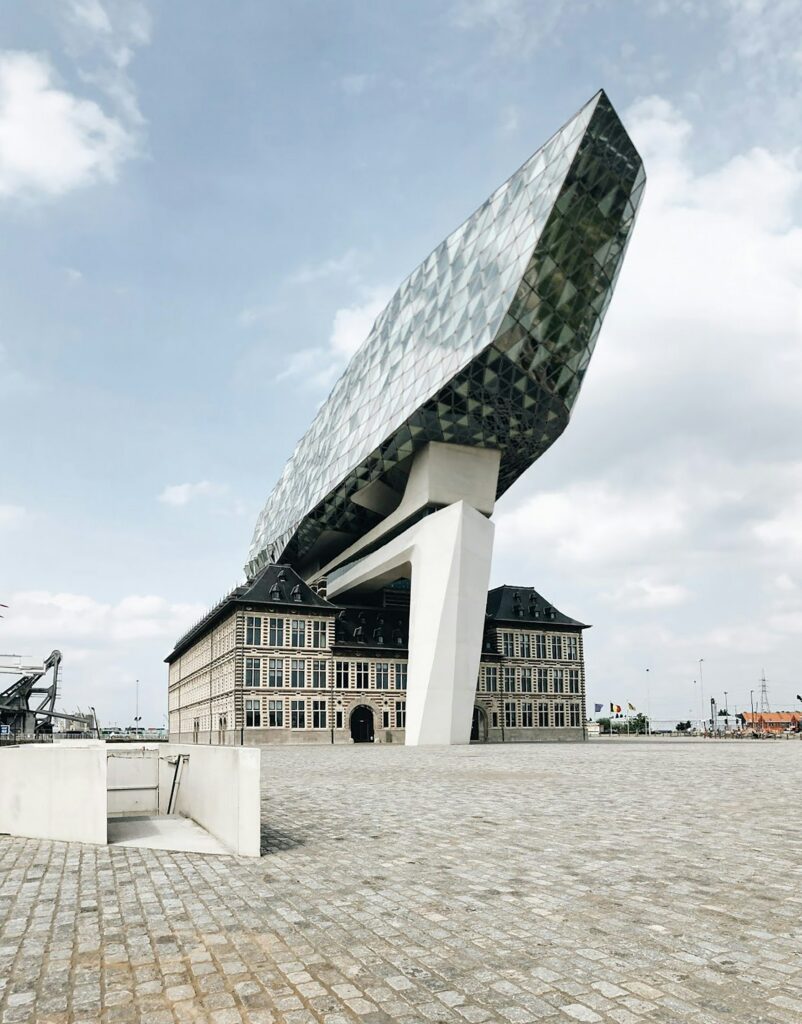
In the afternoon, depending on how much time you have for the return journey, you can choose from several options.
You can opt for a quick visit to the St. Anna Tunnel, a pedestrian tunnel inaugurated in 1933 that connects the two banks of the Scheldt. It is about 500 metres long and offers a unique view of the city from the river.
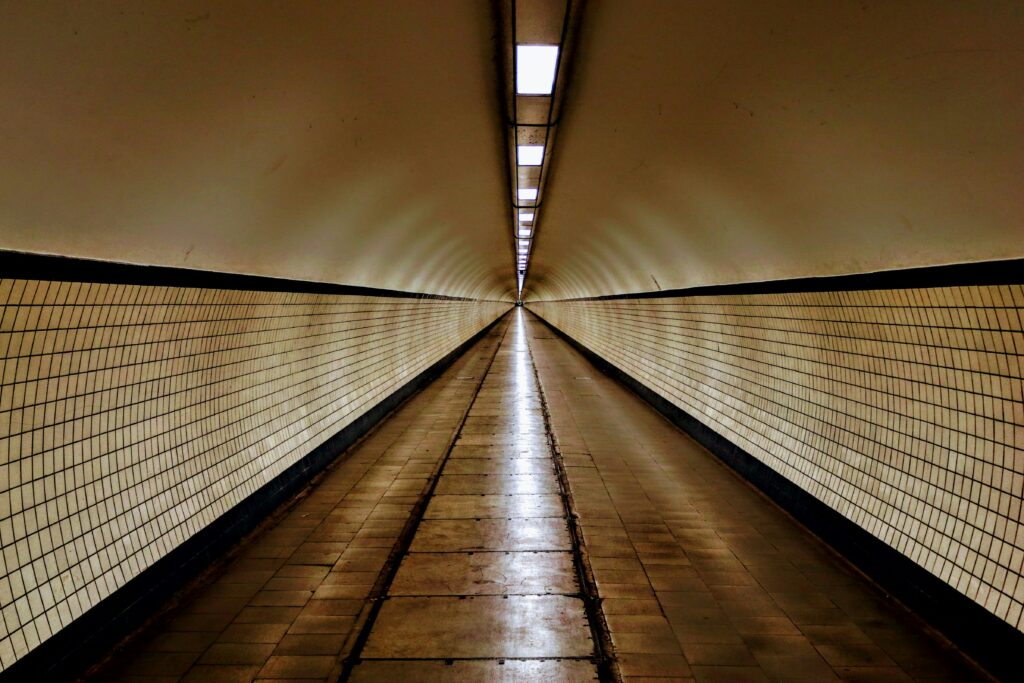
Alternatively, head to the fashion district around the Nationalestraat, which is a fashion lover’s paradise. Here you will find emerging designer boutiques, luxury fashion stores and the Fashion Museum (MoMu).
Finally, just behind the Central Station is the Antwerp Zoo. Founded in 1843, it is home to over 7,000 animals of 950 different species. The zoo is known for its conservation programmes and its historic architecture, which includes Art Nouveau buildings.
Where to eat in Antwerp
Antwerp, like much of Belgium, has a rich brewing tradition, reflected in the wide range of beers available, the numerous craft breweries and historic bars.
The city is a beer lover’s paradise, offering experiences ranging from tasting unique beers to discovering the local brewing history and culture. If you are a beer lover, a visit to the historic De Koninck brewery is a must. Founded in 1833, it is one of the most famous breweries in Antwerp. Its most famous beer, ‘Bolleke’, is an amber ale with a rich, malty flavour. The brewery offers guided tours that include an overview of beer production and a final tasting.
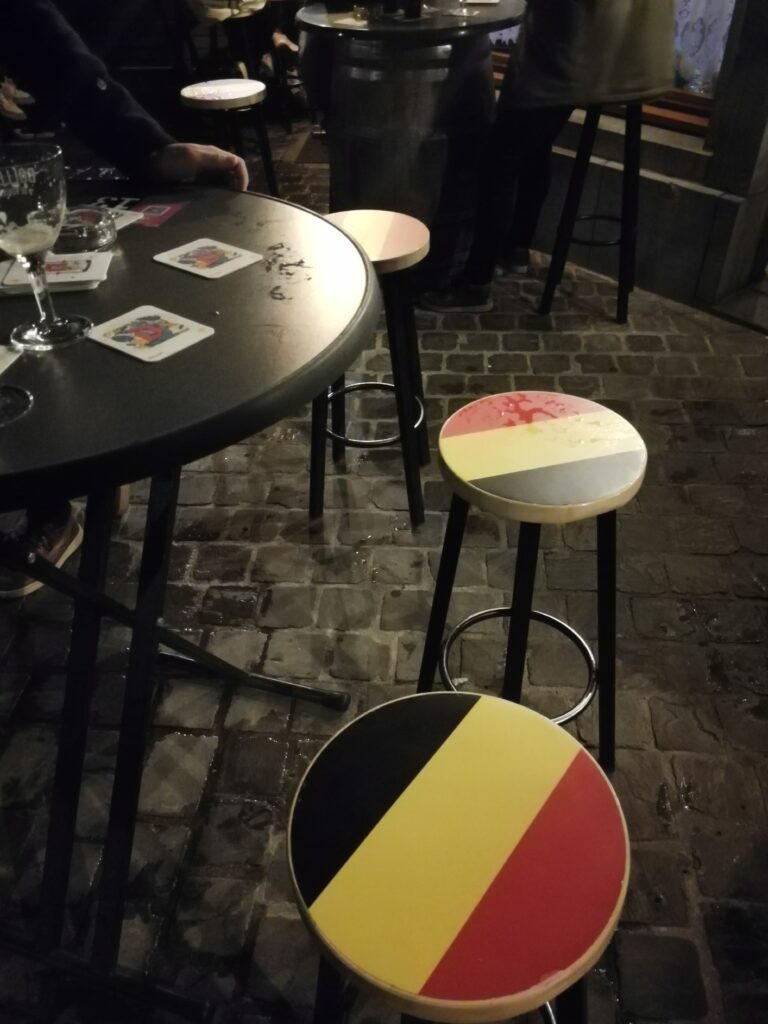
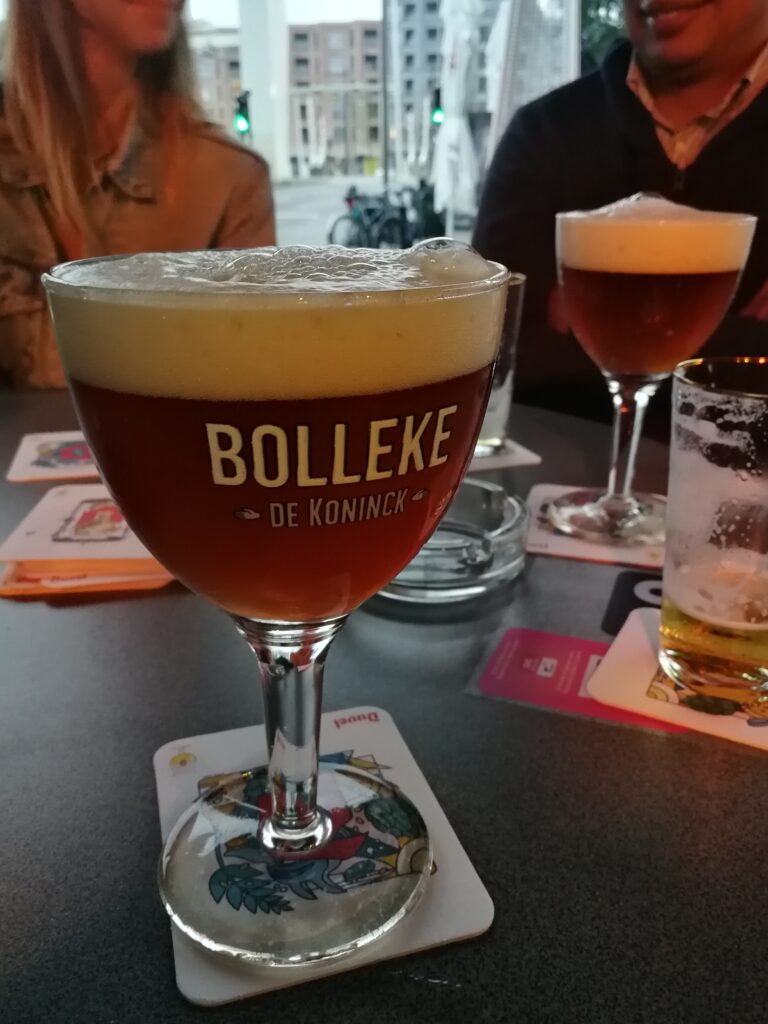
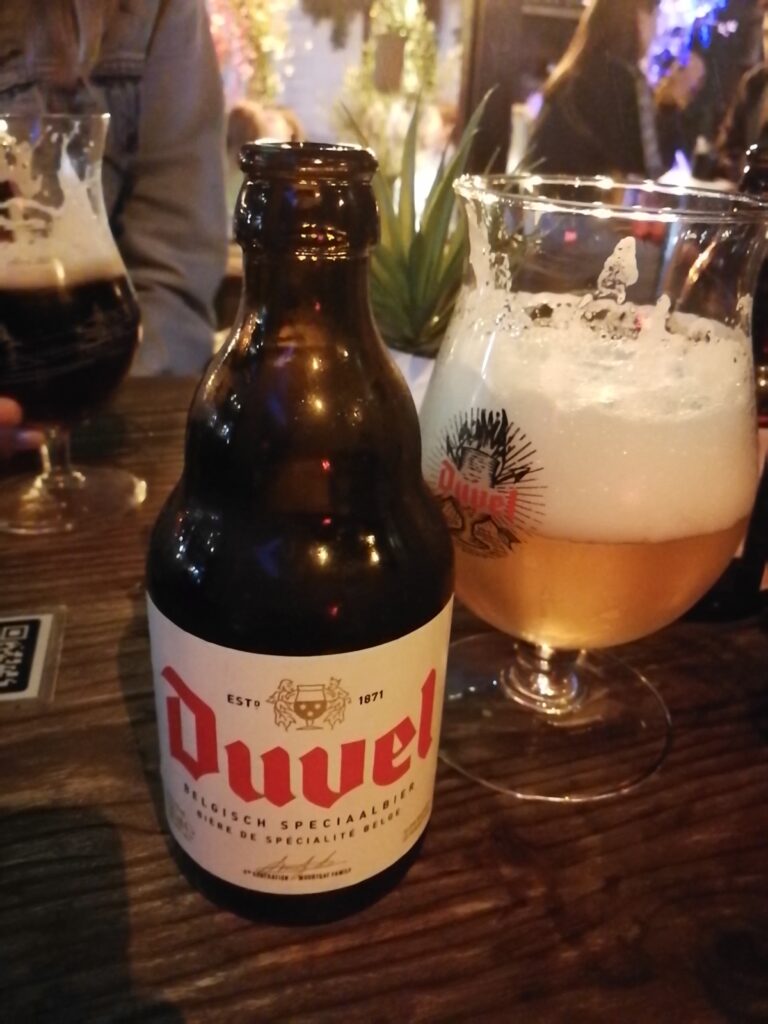
Some of the best places to drink beer are Café Kulminator, famous for its large selection of rare and aged beers, Den Engel, located in the heart of Antwerp’s historic centre, and ‘t Oud Arsenaal, known for its selection of classic Belgian beers and its rustic setting.
If you are a beer lover, we highly recommend that you take part in a beer tasting tour of the city’s best breweries; BeerWalk offers a tour that allows you to taste the best beers and at the same time visit the city’s best attractions with trained guides who speak English.
As well as beer, the main local dish is Stoofvlees, a beef stew slow-cooked in dark Belgian beer and often served with chips. You should also try the typical Belgian waffles and fries (at Frituur N°1 in Hoogstraat 1 they are said to be the best in the city!)
Finally, supertypical are the Antwerpse Handjes, hand-formed biscuits made from flour, sugar and butter which can be plain or filled with chocolate or marzipan. They are a popular souvenir for visitors to the city.
Our recommendation for a lunch or dinner in the city centre is definitely Elfde Gebod, which translates as ‘The Eleventh Commandment’, one of the most iconic and special restaurants in Antwerp and one of our favourites.
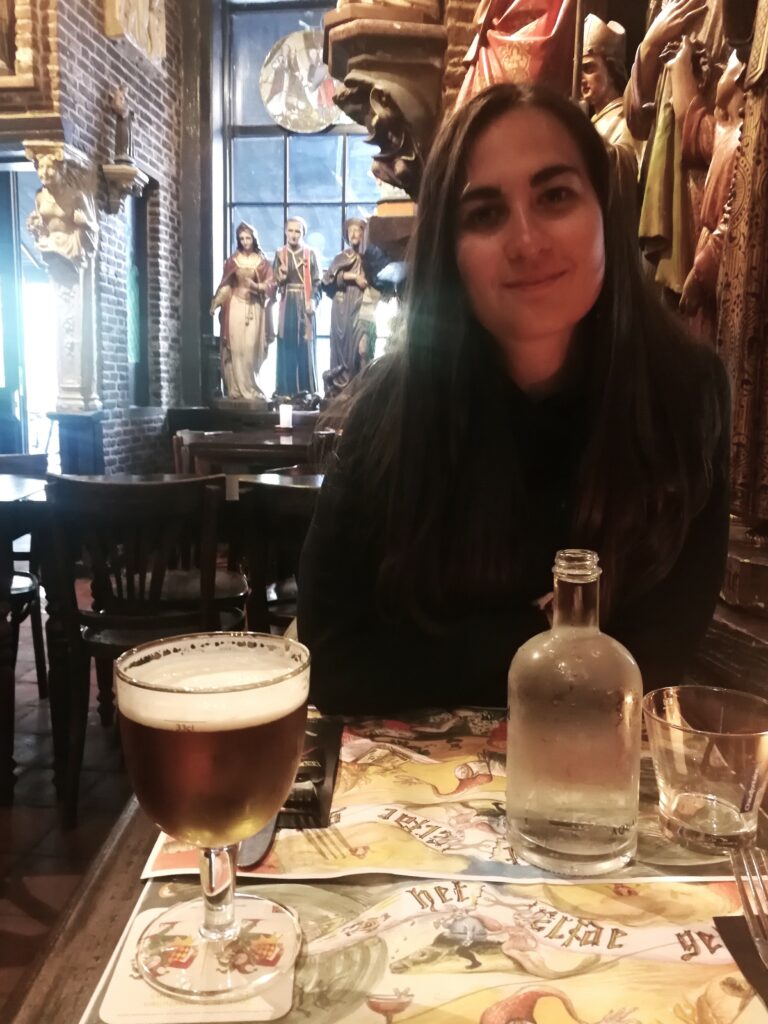
Located next to the Cathedral of Our Lady, in the heart of the historic centre of the city, this place is not only famous for its cuisine, but also for its unique and characteristic surroundings. The interior of the restaurant is decorated with a vast collection of religious statues, frescoes and sacred objects, creating an evocative and almost mystical atmosphere.
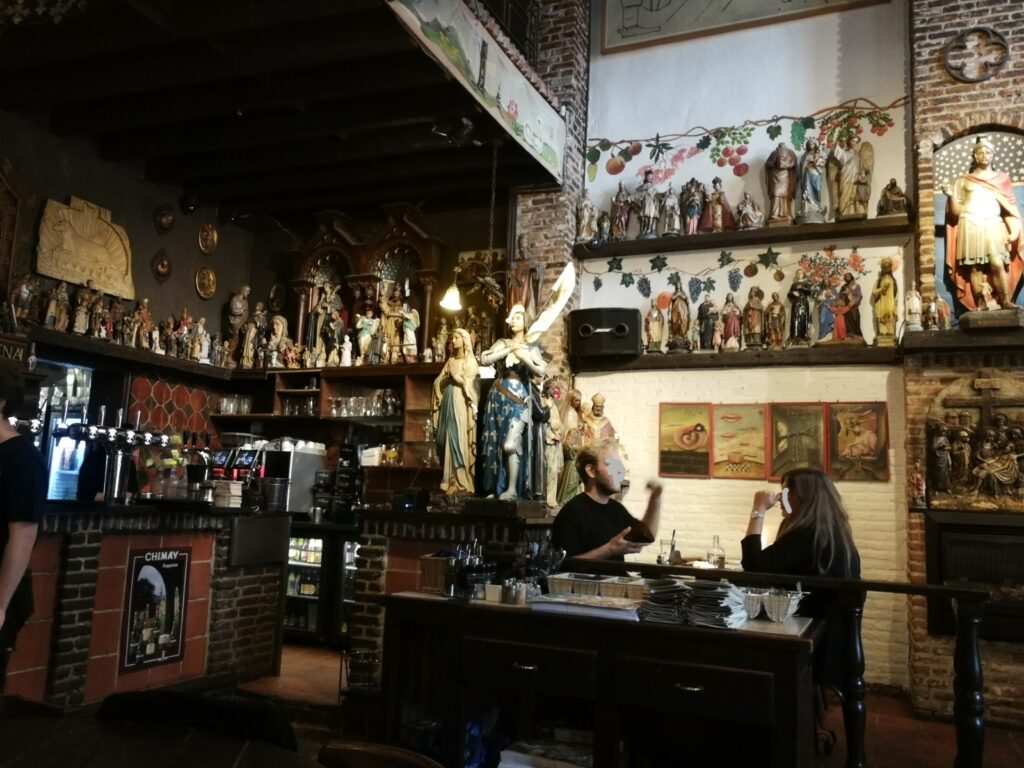
Every corner of the restaurant is filled with images of saints, angels and biblical figures, making the restaurant a veritable living museum. This eclectic and distinctive style is an integral part of the Elfde Gebod experience, offering visitors an environment they won’t find anywhere else. Give it a try, you won’t regret it!
Check here for the menu and the address!
Daytrip from Antwerp
If you have an extra day, Antwerp’s central location and excellent rail links make it an ideal base for exploring many of Belgium’s attractions. These are some of the best day trips you can take from Antwerp:
- Bruges (about 1h30 by train) is a charming city famous for its picturesque canals, cobbled streets and well-preserved medieval architecture
- Ghent (about 1 hour by train) is a lively city with a rich medieval history, famous for its historic buildings, canals and vibrant cultural scene
- Brussels (about 40 minutes by train) is a cosmopolitan city with a rich cultural, historical and gastronomic offer
- Mechelen (about 25 minutes by train) is a charming city between Brussels and Antwerp, famous for its historic architecture and carillons
- Leuven (about 1 hour by train) is a lively university city, famous for its historic university, KU Leuven, and its breweries (including Stella Artois)
- Ostend and the Flemish coast (about 1h45 by train).
What to read before traveling to Antwerp
Before heading to Antwerp, we suggest reading Girl with a Pearl Earring by Tracy Chevalier. Although the novel is set in the Netherlands and focuses on the life of the famous Dutch painter Johannes Vermeer, it offers valuable insights into Flemish culture, art, and history.
The novel beautifully captures the Golden Age of Dutch and Flemish painting, a period that shaped much of the region’s artistic heritage, including in Antwerp, a city renowned for its own artistic masters like Rubens. By reading this book, you’ll gain a deeper appreciation of the rich artistic traditions that still influence the culture and architecture of Flanders today.
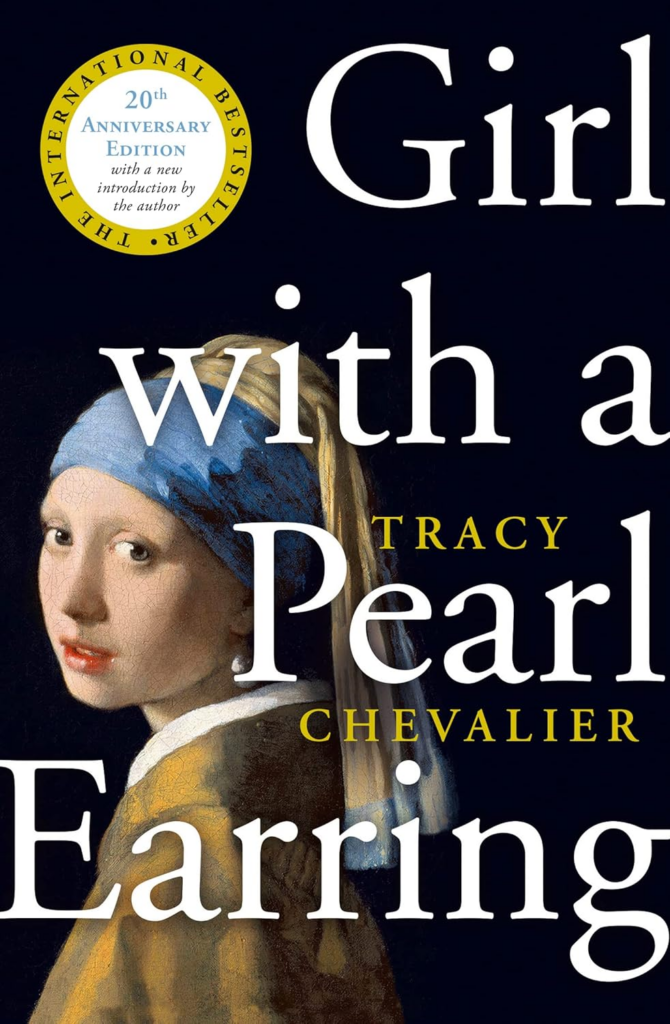
Travel Tips from KeepMoosing
Traveling is exciting, but protecting your data should always be a priority. That’s why we trust Surfshark, a leading cybersecurity company offering tools like VPN, Antivirus, and Alert (a data breach detection system). We highly recommend Surfshark for its versatile VPN, which is perfect for keeping your digital life secure while on the go.
With Surfshark VPN, you can safely use public Wi-Fi networks without worrying about fraud or hacking, ensuring your sensitive information, such as passwords and banking details, stays protected. It also allows you to bypass geographical restrictions, so you can stream your favorite TV shows or access region-blocked websites from anywhere.
We also suggest using Surfshark VPN while planning your trip. It helps you avoid price discrimination by changing your virtual location, often leading to better deals on flights and hotels.
You can buy your subscription here!
Conclusions
In this article we have seen in detail what to see in Antwerp in 2 days, where to eat its delicacies and where to drink its famous beers. Antwerp is an ever-changing city that will surprise you with its natural internationalism (all citizens speak fluent English), as only port cities can have.
Have you ever been to Antwerp? We really hope this guide about what to see in Antwerp in 2 days will help you plan your trip! Write us your thoughts and suggestions in the comments section to make this guide to the Flemish city even more complete!
***Some of the links on our blog are affiliate links. By purchasing through these links, you help us support our work at no extra cost to you.***

